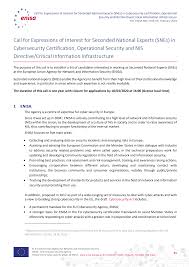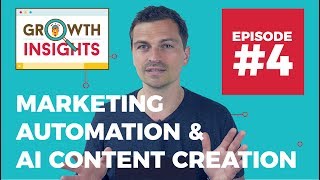
RSS feeds allow you to subscribe to a website's RSS feed if you are interested in keeping up with a particular publication, writer, online entity, etc. that regularly updates their content. Some popular browsers like Firefox, Internet Explorer, or Opera have the ability to subscribe to RSS feeds. Alternatively, there are a number of desktop and web based RSS readers to choose from.
RSS is short for "Really Simple Syndication." The publisher of a website creates an XML document that contains a list with the latest content. This list is updated regularly. When a user clicks on an RSS icon, the feed is automatically displayed and downloaded. This allows the user to get a summary of all new content from a set of websites in one place. The content is then browsed and read separately.

Netscape Communications first developed RSS technology in 1999, for use on its MyNetscape Portal. In 2002, software maker UserLand took over development of the format. The RSS 2.0 specification was published in 2003. Atom was a new syndication standard introduced at the end 2004.
You can subscribe to an RSS feed using the built-in feature of your browser or by downloading a separate program called a "feed reader". The feed-reader will periodically download and check any new material from the websites you subscribe to. Many feed readers offer a unified view that displays all of your subscriptions in chronological order; this can save time and effort when browsing multiple websites for information.
There are also services that deliver RSS feeds to a user's email inbox. These services are used to send newsletters and other publications to a large number of people. Some of these services are free, while others are paid subscriptions.

While the technical details of how RSS works are complex, the concept is very simple. A website can create an RSS feed to inform its subscribers of new content. The feed is made up of a series of items. Each item includes a headline, a link, and a description. The item entries are published as a standardized XML that is easily understood by computer. The XML codes are then used by the software to display RSS feeds in a webbrowser, or a similar program.
FAQ
Marketing automation: Is it the future of marketing?
Marketing automation is the process of utilizing software and technology to streamline, automate, and measure marketing tasks and workflows. It makes it possible to use more complex tasks like customer behavior data analysis and personalized engagement. It allows marketers to save time, money, and energy by automating routine tasks such as segmentation. Testing and personalizing campaigns. Tracking website visits and behavior. Managing customer engagements across channels.
Marketing automation is a tool that makes the customer journey easier and more understandable. Marketers will be able track customers' journeys across channels by tapping into richer data sources like social media platforms and connected devices to create personalized experiences that engage with customers at every touchpoint. This will enable them create strategies that are highly targeted and flexible.
This will enable marketers to automate decisions and increase efficiency, as well as artificial intelligence (AI). AI-powered bots can handle repetitive tasks like answering customer FAQs or scheduling email appointments. Marketers can then focus on the more complex tasks that require human intelligence such as refining the content strategy, understanding customer sentiments on specific products, and other important tasks.
Finally, with an increased acceptance of marketing automation tools among smaller businesses along with advancements being made in predictive analytics technologies which help generate insights from data collected via marketing automation; it's safe to say that automated marketing will continue to rise in popularity as we approach 2021.
Marketing automation is an indispensable tool that can help companies succeed in today’s competitive market. Businesses can save time and money while creating personalized customer experiences with the right tools and strategies. Businesses can improve customer satisfaction and respond rates by using customer segmentation. Marketing automation will be more important as technology evolves to help businesses remain competitive and succeed in future.
How do you automate WordPress blog posts
Automating a WordPress blog post is the process of publishing content on your blog automatically, based on schedule or events. You can automate this by creating an RSS feed, or using other automation services to provide automated content. It is also necessary to create triggers. These include when and who should be notified when the post publishes. Your content will reach the right audience when it publishes automatically by having the ability to set rules.
Jetpack or Blogger Tag Editor plugins make it easier to automate a WordPress blog post. These plugins allow for better control over automated WordPress posts. Features include the ability to customise publishing dates and time, author details, category & tags, and customizing each article's publication date before it is published. Additionally, some plugins can also integrate your blog into social media platforms, so when you push a new post live - it will be shared across your different channels.
Automating WordPress blogging requires careful setup. Mistakes can lead to inaccuracies in Google and other search engines, which could result both in lower ranking and customer retention. Site visitors who subscribe to email updates or receive news updates from third parties can have a better experience by ensuring that data is delivered promptly from external sources. This helps them stay in line with SEO guidelines.
With the proper implementation of automation processes for WordPress blogging platforms, publishers are able to save time and resources while still generating quality content that keeps their readers engaged without having to worry about manual postings every day. Automated blogging solutions can't guarantee success, but they can provide benefits such as increased efficiency and cost savings, as well as higher customer engagement rates when used properly.
In addition to automated blog posts, WordPress marketing automation can also be used to automate other aspects of digital marketing. Automation tools can manage email campaigns and social media posts as well as other online activities. Automated emails can be sent out on a regular basis with personalized messages for each recipient. Automated social media posts can be scheduled in advance and posted at the optimal time for maximum engagement. Automated analytics is a great tool for marketers to monitor the performance of campaigns and make data-driven business decisions. Automation can also help businesses save time, freeing up valuable resources to perform more creative tasks.
Market automation can also help personalize customer experiences. It is possible to use automation tools to identify the interests and preferences of customers, allowing businesses tailor content and offers to their target audience. Personalized messages can also be sent through automated emails based in part on the customer's browsing and past purchases. Automated social posts can be tailored to specific audiences. Automated analytics helps businesses monitor campaign performance and make data-driven business decisions.
For businesses that want to simplify their digital marketing efforts, marketing automation can be a great tool. Automation tools are useful for managing email campaigns, social media posts, as well as other online activities. Automation helps companies save time and allows them to focus on more creative tasks. Automation can also be used to personalize customer experiences, allowing businesses to tailor content and offers that are more likely to resonate with their target audience.
What is WordPress marketing automation?
WordPress marketing automation is a system for automated, streamlined, and effective management of all online content and communications related to marketing, including websites, email campaigns, social media posts, online advertising, and more. It enables the efficient execution of automated tasks that would be too tedious or time-consuming to do yourself.
It helps businesses not only save time but also ensure consistent brand promotion each time on multiple channels and engagement with customers in real time. Automating complicated tasks like segmentation and data analysis can be automated so marketers can concentrate on creating strategies based upon accurate insights instead of manually reviewing large volumes of data.
The core features of WordPress marketing automation include creating automated lead nurturing workflows, setting up powerful triggers to send emails based on specific visitor activities, and customizing customer journeys with personalized messages that will exceed the expectations of potential and existing customers. Also included are tracking detailed reports about website activity and ROI performance to measure the effectiveness of campaigns over time.
WordPress marketing automation is basically a tool that allows businesses to automate mundane tasks while improving their overall marketing performance. They can also use better resources and reduce costs.
Statistics
- The stats speak for themselves: Marketing automation technology is expected to show a 14% compounded annual growth rate (CAGR) over the next five years. (marketo.com)
- Companies that implement this kind of lead scoring enjoy 28% better sales productivity and 33% higher revenue growth than companies without lead scoring (MarTech Alliance). (marketo.com)
- It can help reduce administrative overheads to savings of 3.4% on average, with most companies saving between 1.5% and 5.2% (Lido). (marketo.com)
- The highest growth for “through-channel marketing automation” platforms will reach 25% annually, with “lead-to-revenue automation” platforms at 19.4%. (marketo.com)
- While they're doing that, their competition is figuring out how to get more out of the 99.99% of the market that's still out there. (hubspot.com)
External Links
How To
How can I use automation for personalizing my content marketing efforts
Automated personalized is a process that uses data-driven insight and automated technology in order to tailor content for different personas. This helps you create personalized marketing experiences based on how each individual interacts with your brand. Automation can help increase the relevance of your message through segmentation, targeting, optimization strategies.
It is easier for people to connect with your brand if you tailor your content to their needs and preferences. Automating processes allows you to spend more time on the bigger picture tasks, like creating quality content or strategizing for better reaching your target audiences.
Segmentation helps personalization get off the ground. By breaking down your audience in smaller segments, you can better target them. Automating this process - examining behavior patterns from past campaigns - allows you to quickly create segments based on language, interests, demographics, and even purchase history. This allows you to create targeted messages for each group rather than blasting one message across every platform.
Targeting works in conjunction with segmentation: after the audience has been split apart, it's time to get messaging right by landing attractive offers or ads in front of them at ideal times. This could include targeting pages or channels within an email marketing campaign, or placing banners on micro-targeted areas. Leveraging data intelligence allows for new ways to reach potential leads beyond the traditional methods such as cold calling and direct mail.
Optimizing is the last step. It allows marketers to make minor adjustments during ongoing campaigns to improve results. Customer actions can be used to personalize messages and further personalize them. Businesses can now access powerful tools to make sure customers get customized messages by analyzing past campaigns, as well as making adjustments in real time.
Automated Personalization helps brands segment audiences quickly and optimize engagement via real-time adjustments powered through data analytics.